|
*Note* This page
only focuses on the wildlife encountered on this trip. As soon as I get a
page up that encompasses the whole trek, I’ll post a link here.
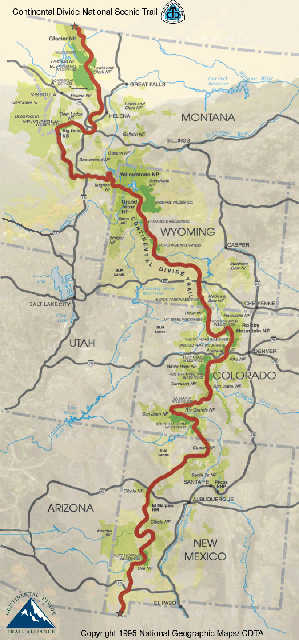
This year I took almost six months
out of the grind to spend hiking from Mexico
to Canada along Continental Divide Trail. It was an amazing adventure and I have many stories to tell, along with thousands of pictures to show. However, in keeping with the theme of this website, I’ll only focus on herps
and other wildlife encountered along the way.
Herping was limited by the very nature
of the hike, as well as the terrain the rout traversed. One of the hardest parts
of thru-hiking for me is not having the luxury of slowing down to thoroughly explore the habitats encountered along the way. The bottom line is, that if you want to finish a trail of this length, you have to
put in the miles. This excludes looking under every rock or chasing after every
lizard that scurries away. This can be agonizing for someone with a fascination
for wildlife but, in the end, it’s a small price to pay for the overall experience.
The trail starts on the Mexico/New Mexico
boarder then travels 3000 miles (give or take) through the Rocky Mountains to the Montana/Canada boarder. The trail passes through some fantastic herping opportunities in New
Mexico but an early season start means dry conditions and few reptiles and amphibians on the surface.
The rest of the trail, for the most part, stays up high and cool along the Continental Divide only occasionally dipping down
and giving the opportunity to see a herp.
Despite these conditions, I did manage
to see a few reptiles and amphibians along the way, as well as some other exciting wildlife.
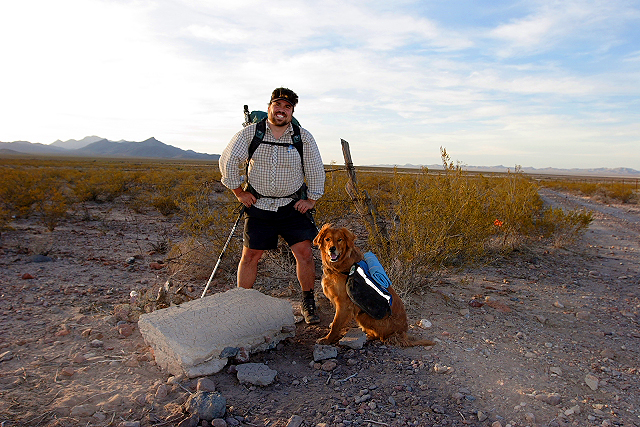
My hiking partner Eric (who took a few of these photos), my dog Quinn, and
I started our trek the evening of April 15, in the middle of nowhere, at a place called Crazy Cook. The Mexico/United States boarder here consisted of just a rickety old barbed wire fence.
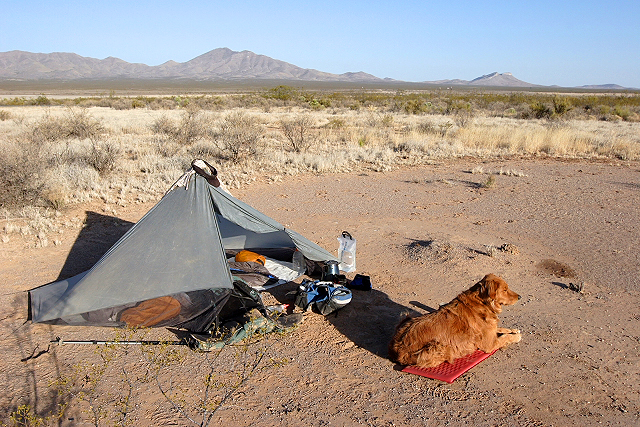
A typical camp in a typical New Mexco boot
heel landscape, dry and flat, punctuated with small mountain ranges.
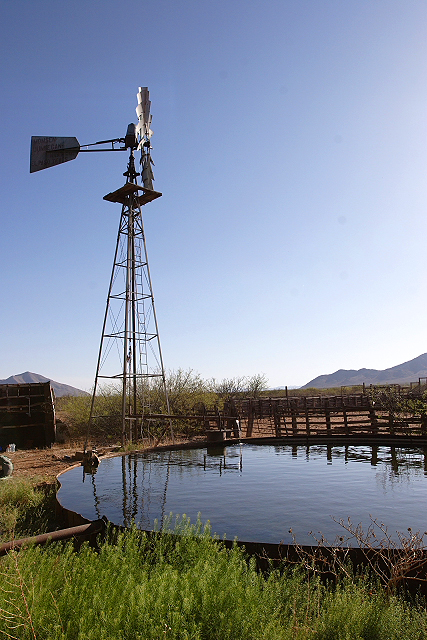
There was no natural surface water in the New Mexico boot heel so we had to
rely on windmills, which were unreliable. Where these windmills were more permanent,
they created green islands which attracted all sorts of desert wildlife like javelina, black-tailed jackrabbits, and migrant
song birds.
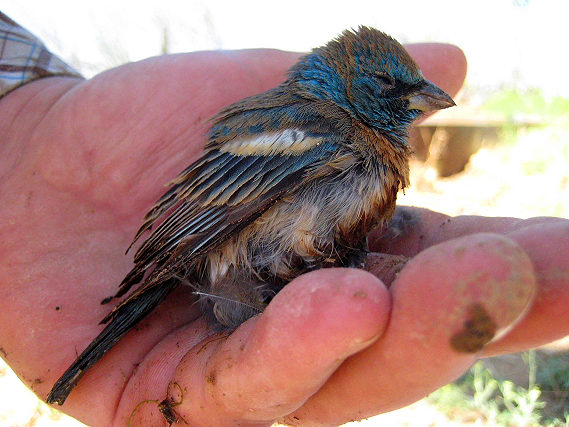
This unfortunate lazuli bunting was
found dying beneath the above pictured windmill.

One of the lizards I most wanted
to see was one of the first I found, this round-tailed horned lizard.

Another exciting find while still
in the southern part of New
Mexico was this long-nosed leopard
lizard.
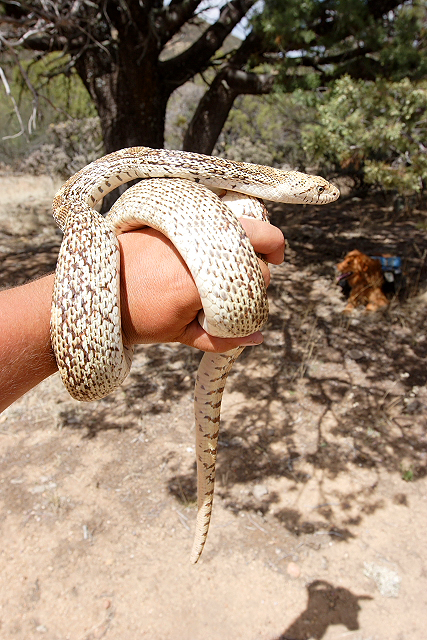
This large gopher snake was the first of many.
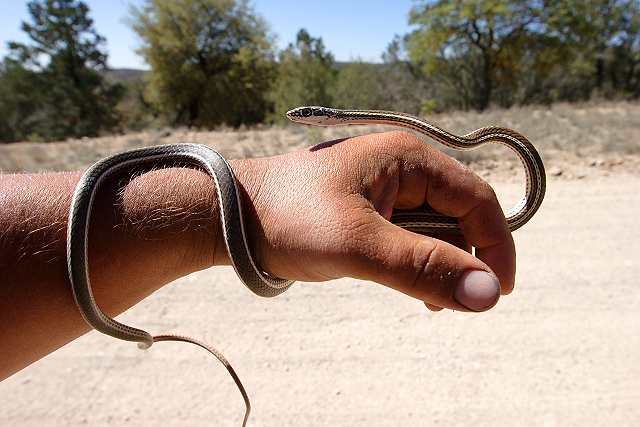
I crossed paths with a couple desert striped whipsnakes.
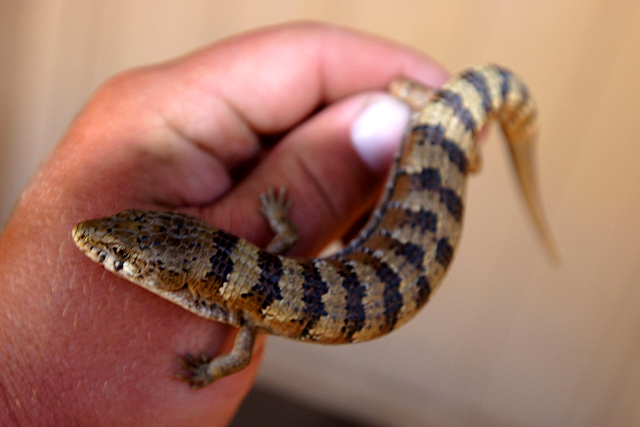
We stopped in to resupply
in a great southern New Mexico town
called Silver City. While there, I took in some fantastic birding
and flipped this Arizona alligator lizard.

After leaving Silver City we entered the Gila Wilderness. The Gila is the first and largest wilderness area in the United
State, and a place I hope to return to again.
On are way through the wilderness we followed the Gila River.
The river was a welcome change after so much time spent in an arid environment where constantly worrying about having
enough water was the norm. Before it was all over we decided that we had forded
the river some seventy times, which Quinn loved every time.

The river formed a contrasting lush and
green strip of life through an otherwise arid environment. Wildlife was encountered everyday elk, bear, and loads of birds
like: red-faced warblers, painted redstarts, and common black hawks were seen regularly. Many
lizards were found as well like this southern prairie lizard…


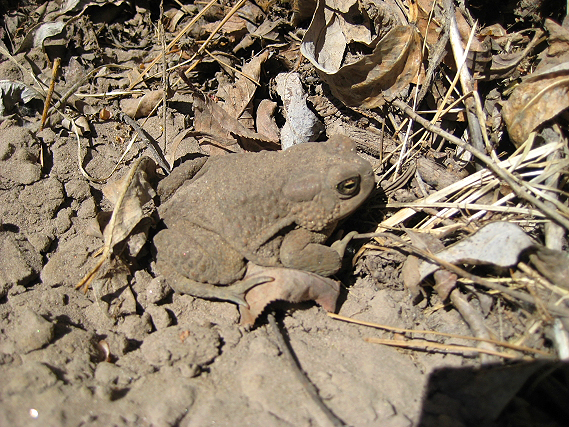
This Arizona toad was also found along
the river.
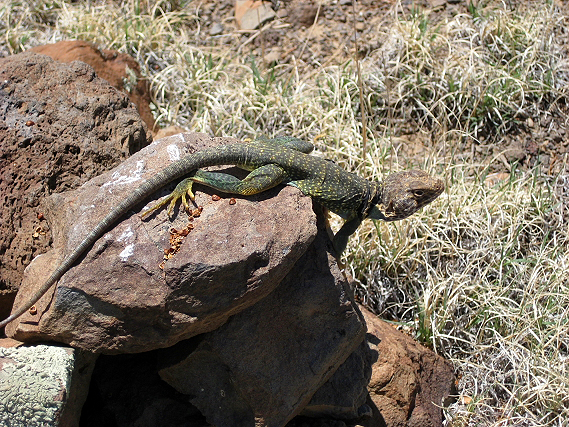
After leaving the Gila there was still
hundreds of miles of dessert to cross before making it to Colorado’s high country. Along
the way some interesting herps were encountered, like this collared lizard.
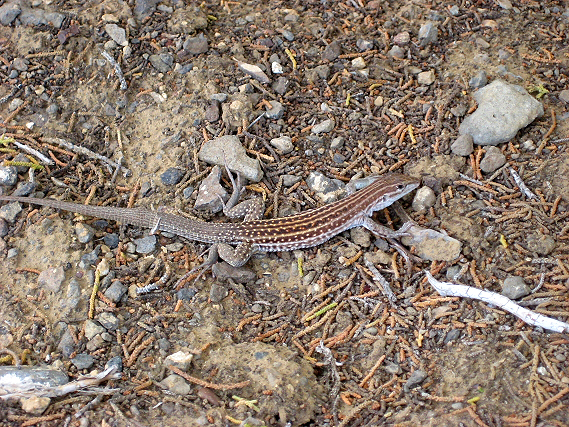
chihuahuan spotted whiptail
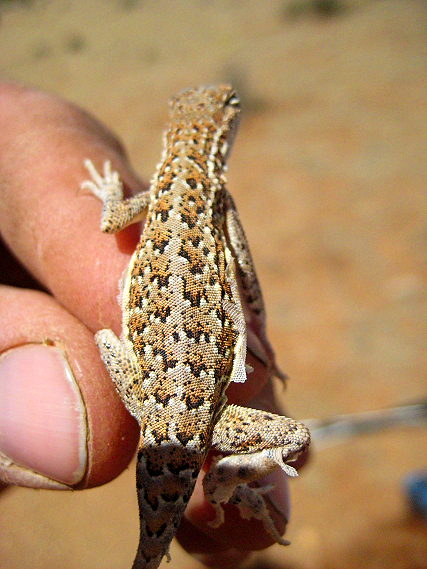
common lesser earless
lizard

checkered whiptail
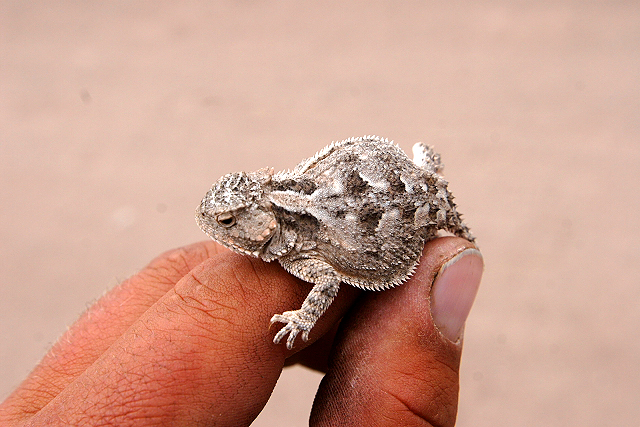
Short horned lizards were common from New Mexico
all the way through Wyoming.
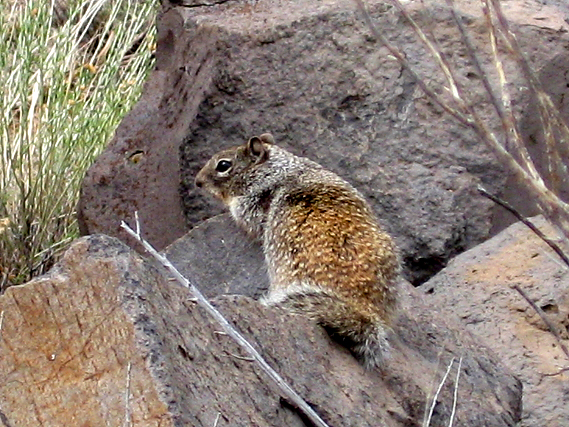
One of many rock squirrels seen in northern New Mexco

Two friends I met along the way showed
me a pond on their ranch that was full of neotenic Arizona tiger salamanders. A
trip around the pond, turning debris, found this rather emaciated terrestrial adult.

This sagebrush lizard was found while
hiking out of Ghost Ranch, the home of the famous artist Georgia O'Keefe.
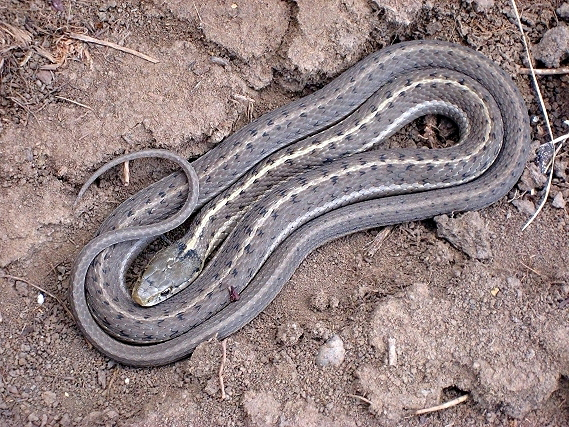
Wandering garter snakes were, by
far, the most common snake encountered.

At this point of the trip Quinn had endured
some serious hardship and his feet had had enough. I was faced with sending him
home or risking permanent injury. The choice was simple, but difficult, and I
knew he would be with people he loved, so before leaving New Mexico I took a couple of days off to make arrangements to get my dog
home. In the end he had made it some six hundred miles through some rough and
dry country and kept a positive attitude the whole way.

Entering Colorado, we were immediately
thrown into the San Juan Mountains where we were faced with a mass of new challenges; but these
are stories for another place so, for now, I’ll try and stick to the theme of this site.

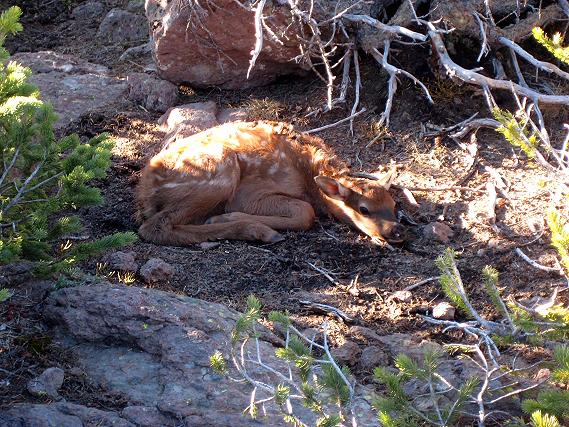
13,000 feet would seem like a terribly
inhospitable elevation to have babies to me, but the elk seemed to think otherwise.
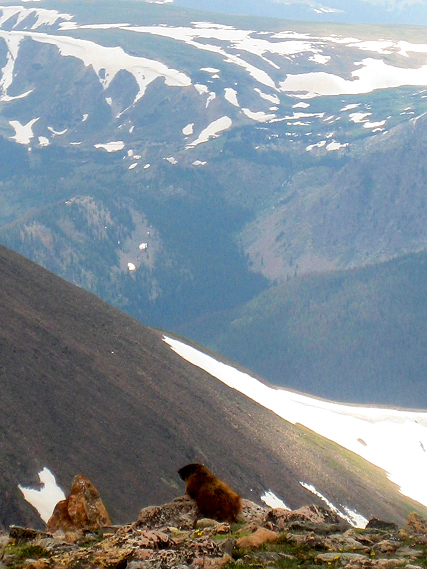
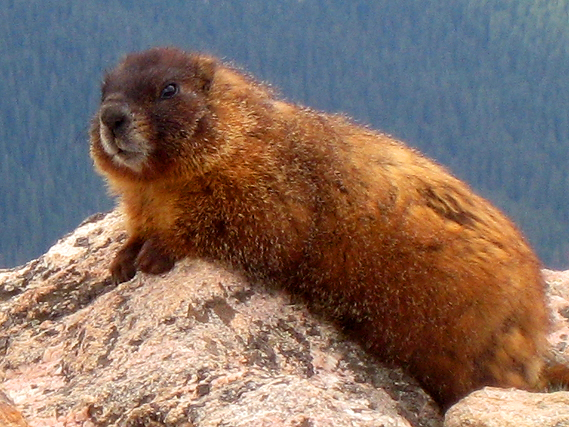
High elevations were the norm all the way
through Colorado
making herps almost obsolete, but there was still plenty of other wildlife, like these marmots.
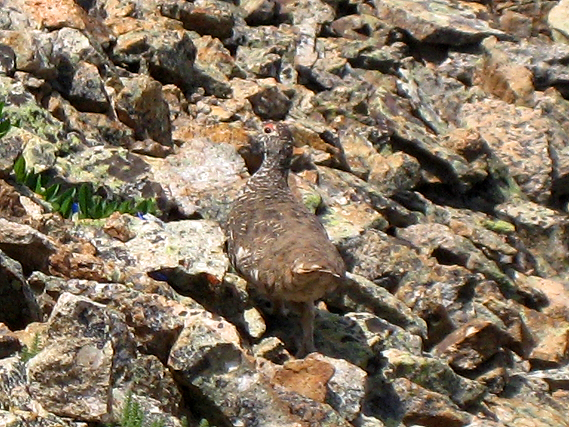
white-tailed ptarmigan
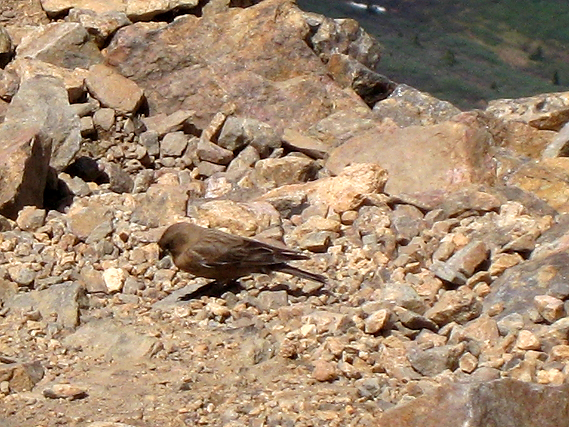
The brown-capped rosy finch was one of
the birds I most wanted to see. The two I got my glasses on were both viewed
at around 14,000 feet.

This was the only snow shoe hare
I saw on the whole hike. I'm certain this hare is classified as a different subspecies than one I found in the New England
Appalachians, but mammal taxonomy does not seem to be as readily available to the laymen as herp taxonomy is.

Mule deer were always present.

Elk were seen almost daily, sometimes in
massive herds. It’s hard to explain what its like to wake up in the morning
to the sound of bugling elk, but it’s certainly one of the many things that make the effort of a hike like this worth
it.

This golden-mantled ground squirrel helped
me clean out my pot one day.
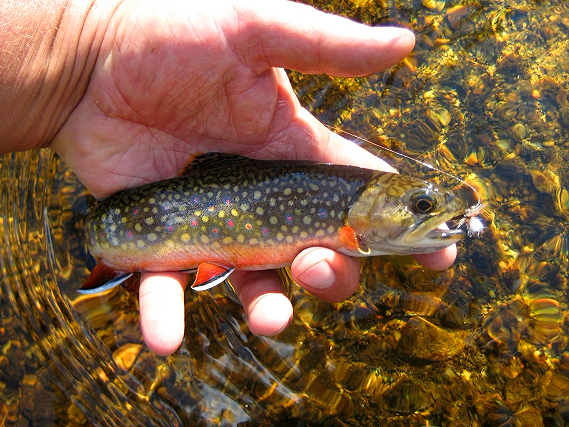
Eric’s friend, Rick, joined
us for a stretch of trail in northern Colorado. Rick graciously allowed me to get my cast on with his pack rod in some high mountain
lakes. I ended up getting a hook into a few brookies like the one pictured above,
and a couple cut-throats which I, unfortunately, didn’t get any photos of.
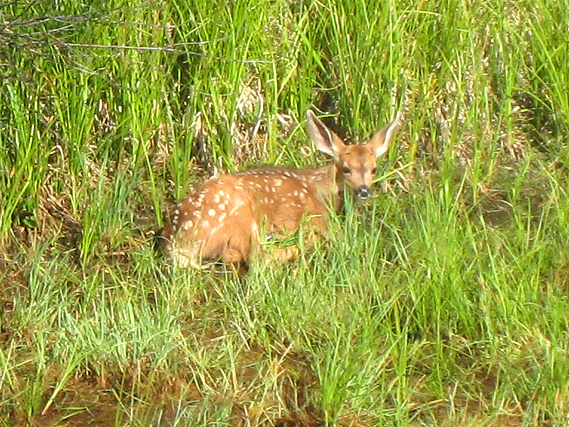
On a road walk out of Colorado and into
Wyoming I spotted this fawn laying in the grass…
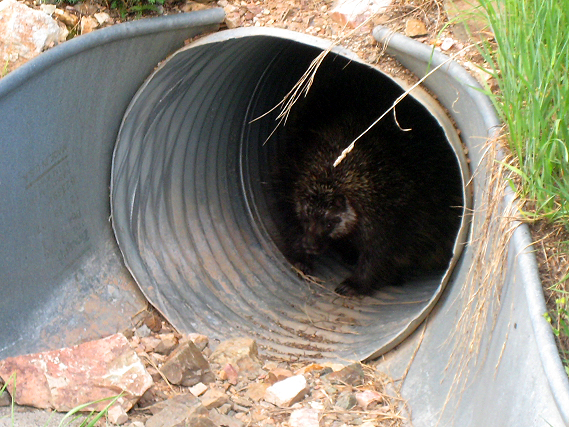
and my first ever live porcupine!
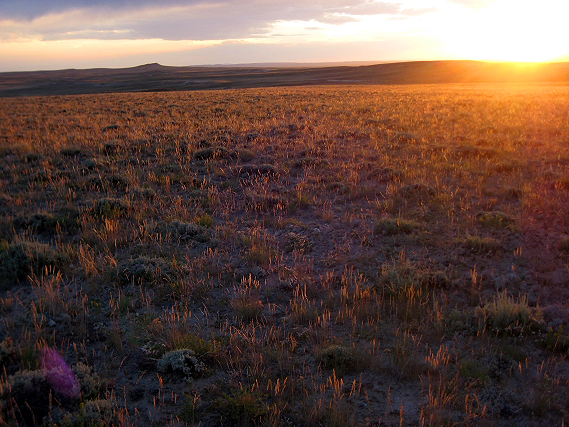
Entering Wyoming was as contrasting
as entering Colorado, but this time, it was leaving the mountains for the flat
and arid Grand Basin.

White-tailed prarie dogs, and white-tailed
jackrabbits were common in the Basin, but this was the best I could do for getting a photo of either.
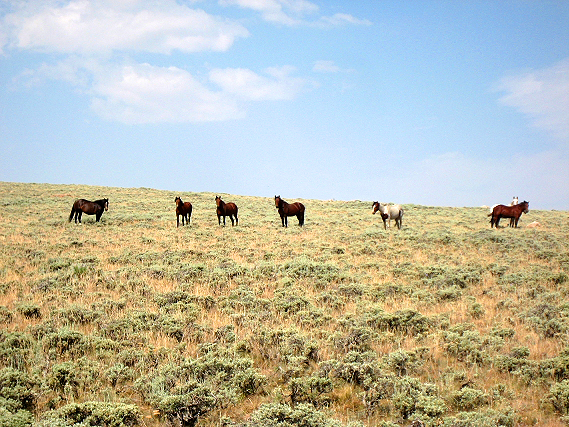
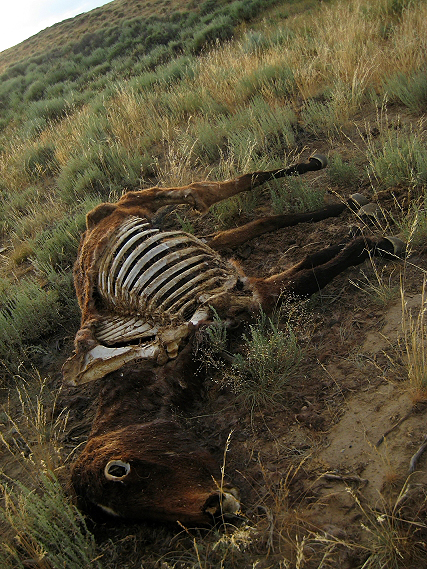
Wild horses were common in the basin.
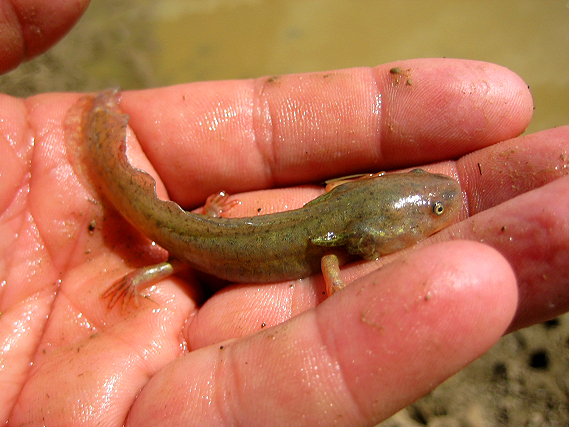

This quickly drying pond was loaded
with neotenic blotched tiger salamanders.
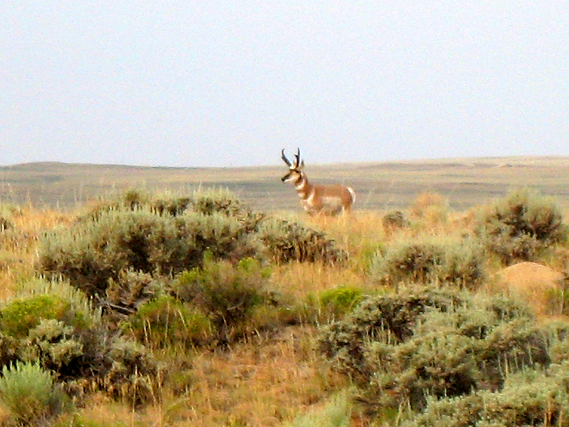
Herds of pronghorn antelope were
seen everyday in the basin.
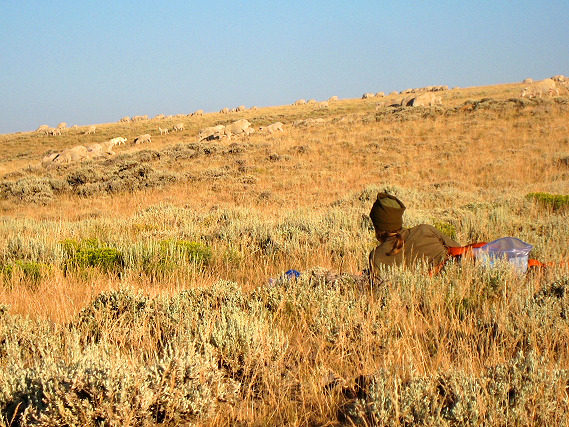
Leaving the Basin took us into rolling
but still quite arid hills. Here’s Erick waking up one morning to the calls
of a passing flock of sheep. Note the sheep dog; these guys can be quite aggressive,
but it’s amazing the way they take care of their flock.

An interesting, I assume fossorial, cricket
found along the way.
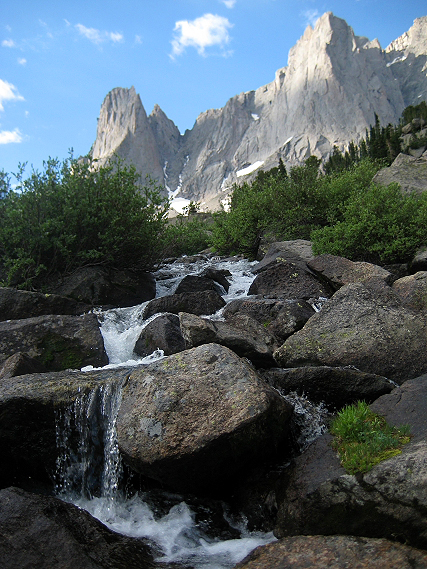
For enduring the basin I was rewarded with the Wind River Wilderness. The
winds were the most amazing mountains I've ever been in. Jagged, gnarly, raw
peaks; the way mountains are supposed to look. On my way through I had an interesting
wildlife experience. I was hiking alone in a remote area very early in the morning
just after sun up when I herd a scattering of rocks and a screaming bleating sound up the slope to my right. I looked up and was shocked to see a deer crashing down upon me.
This all happened in a matter of seconds, but immediately I noticed a crazed look in the deer’s eyes. I know it sounds corny, but the only reasonable explanation for the situation was that the deer was attacking
me. I did notice another animal directly behind, and lower than, the deer, but
again all this took place in just a few seconds and not having time to even consider it I assumed it was just another deer. My main focus, at that moment, was getting out of harms way. I hollered something silly like “no deer” in my toughest voice and jumped to the side. The deer just barley missed me, and while watching it bounce off into the woods my
mind was trying to grasp what just happened. Then I remembered the other animal
and looked back up the slope to see nothing there. This is when it occurred to
me that the other animal was not a deer but a mountain lion and the look in the deer’s eyes was not rage, but fear. I quickly focused my attention on looking for the assumed lion but with no luck, all
was quiet. While I’m convinced the animal I saw was a lion I can’t
say that, with out a doubt, I’m certain of it. Regardless, it was an experience
I won’t soon forget.

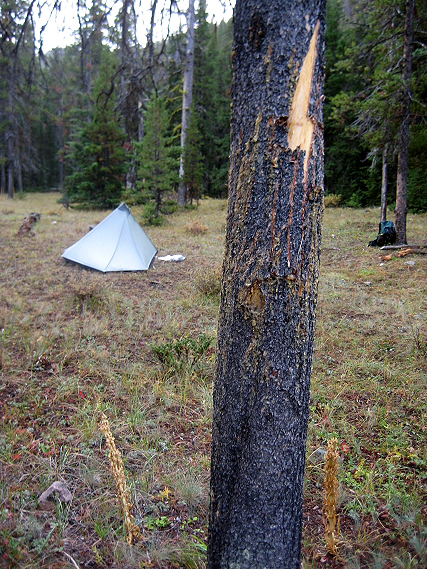
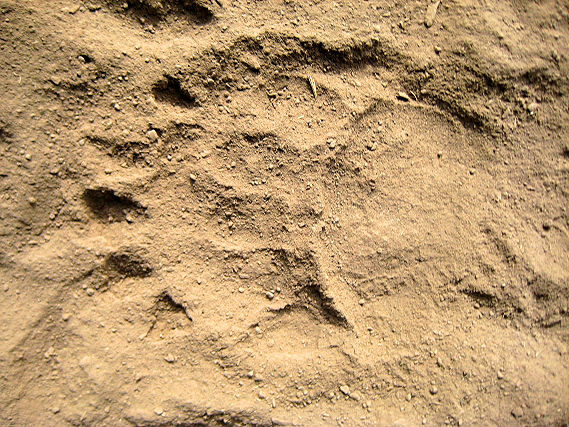

As soon as you enter grizzly country it’s
immediately apparent in the form of turned rocks, clawed trees, ripped apart logs, and plenty of tracks. This was the case upon entering Yellowstone National Park.
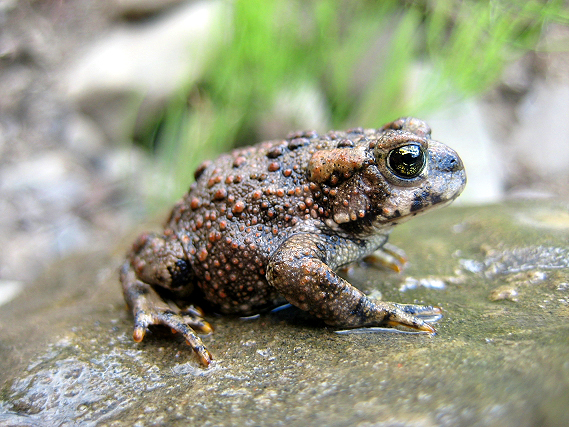
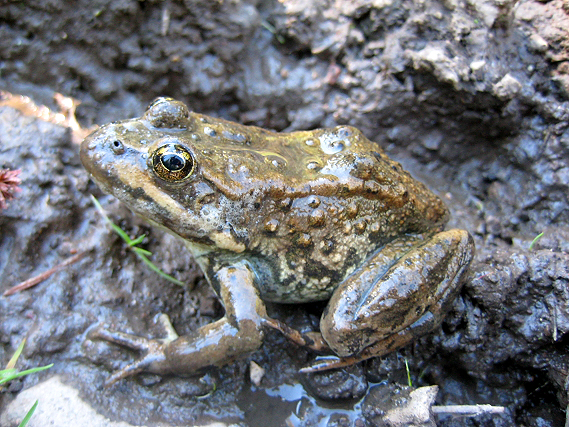
While Yellowstone didn’t live up to my expected safari-like
experience, I did get to see two of my most wanted amphibians, the boreal toad and the Columbian spotted frog.

Of course, you can’t pass through Yellowstone without checking out Old Faithful.

Leaving Wyoming, the rout follows along
the Idaho/Montana boarder where the landscape is open mountains with wooded valleys.
This section passed through, where the rout dips low enough, some great rubber boa habitat, but despite intense searching,
none were found.
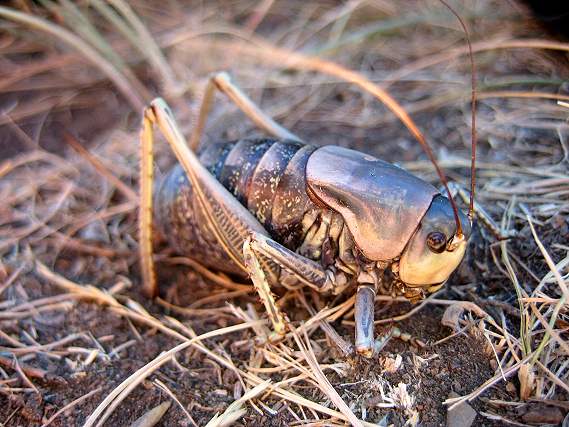
These huge grasshoppers came in red, green,
black, and gray. I imagine just one of these things would fill up the kestrels
seen hunting in the area for the whole day.

Chipmunks were always around, but their identification was beyond me. I
grabbed a photo of this one lying dead on the trail in hopes of later identifying it.
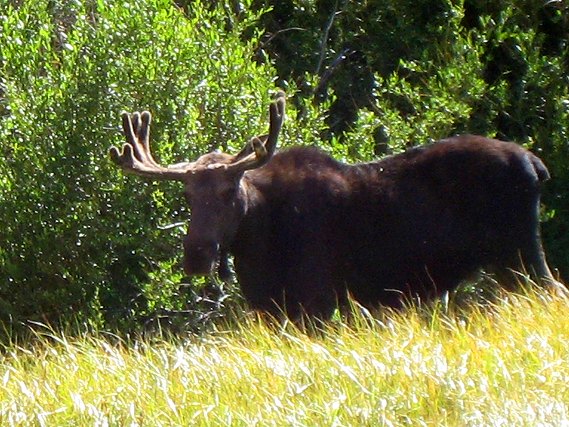
Moose were commonly encountered in
the wet valleys and along rivers. This subspecies was much smaller than those
I encountered in Main.

If I had taken the notion, I believe I
could have almost killed a grouse a day for dinner with just a stick. They are
abundant and let you get to almost within grabbing distance before making their escape.
Three species were seen ruffed, blue, and spruce.
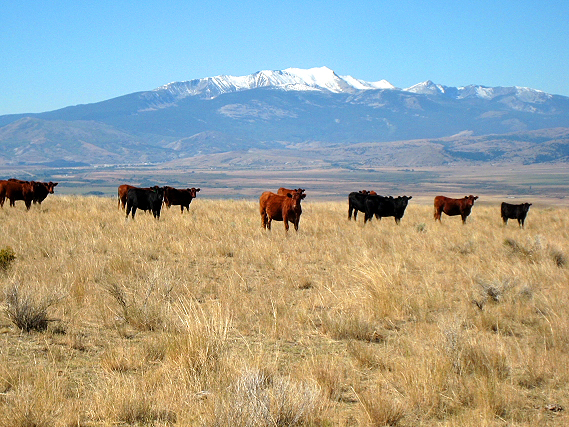
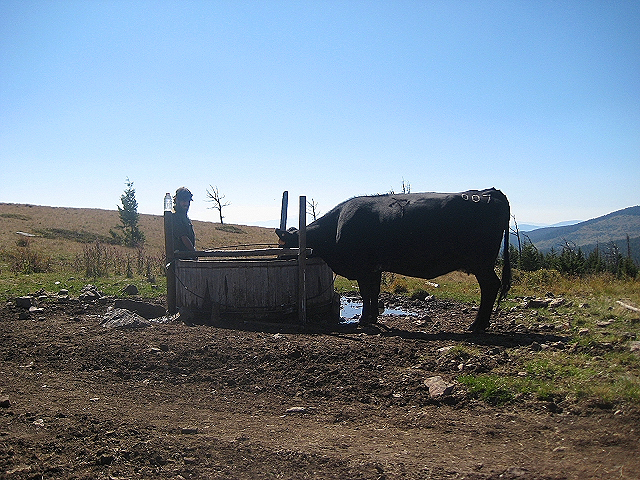
Cows were, very unfortunately, the most
common animal anywhere the length of the trail. If there’s a square foot
of “public” land out west that will support a cow, they’ll stick one on it.
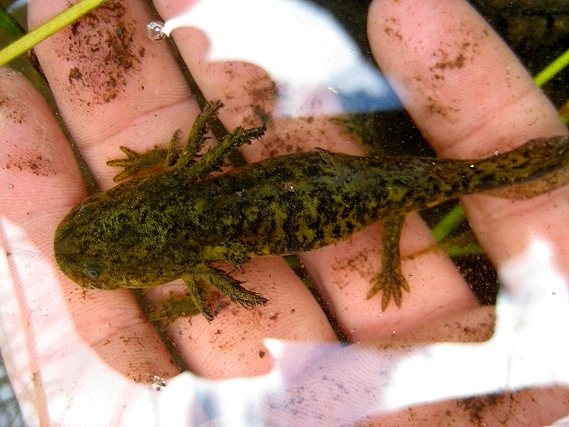
Another blotched tiger salamander
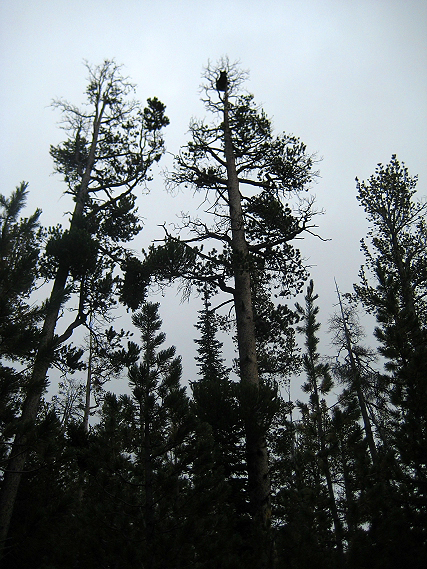

Leaving the Idaho/Montana border
for the interior of Montana
took me into some of my most anticipated country of the whole trip, the Scapegoat and Bob Marshall wildernesses and Glacier
National Park, some of the most remote wilderness and the last strong hold of the
grizzly bear in the lower forty-eight. The grizzly bear was, by far, the animal
I most wanted to see on this trip and I was already bitterly disappointed that I didn’t get to see any in Yellowstone. On the contrary, I had seen many black bears including this one from the Scapegoat
that I surprised and ran up a tree. This bear was obviously extremely concerned
with the situation he was in. He looked down on me considering his predicament
while loudly huffing and puffing.

Glacier National Park
totally surpassed my expectations. It was gaudily beautiful every where you looked. It’s not an exaggeration to say that you can be standing in a valley beneath
a gorgeous waterfall, massive jagged peaks rising up all around you, big-horned sheep on the slope to one side, mountain goats
on the other, Elk bugling at you, rather than running from you, in the valley below, all the while a golden eagle soars overhead
to lit on a snag just a stone throw away.
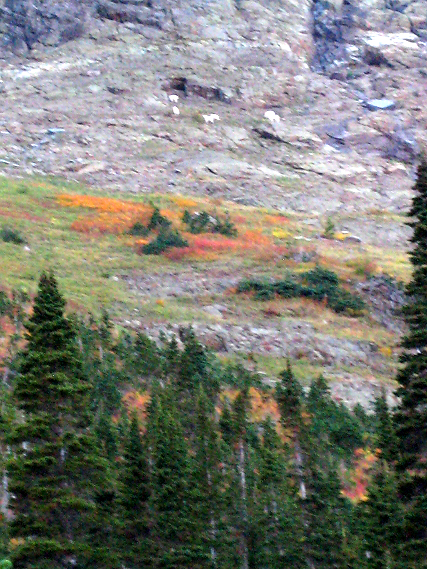
The little blurry white spots on the slope
are mountain goats.
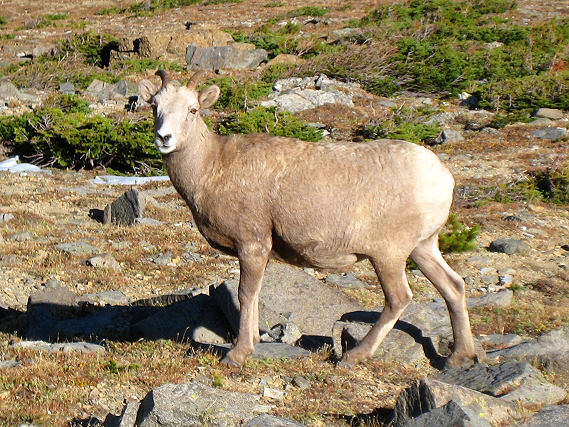
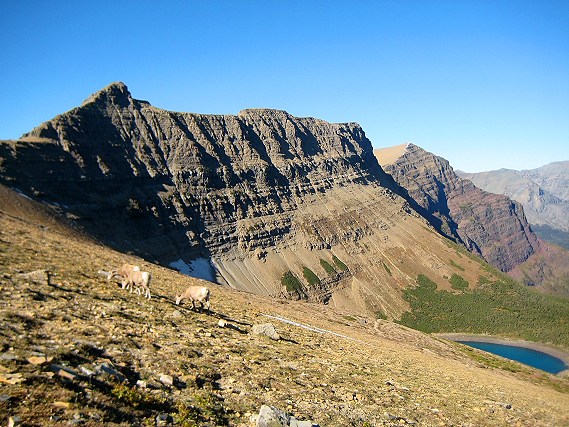
Big-horned sheep were common and quite
tame.
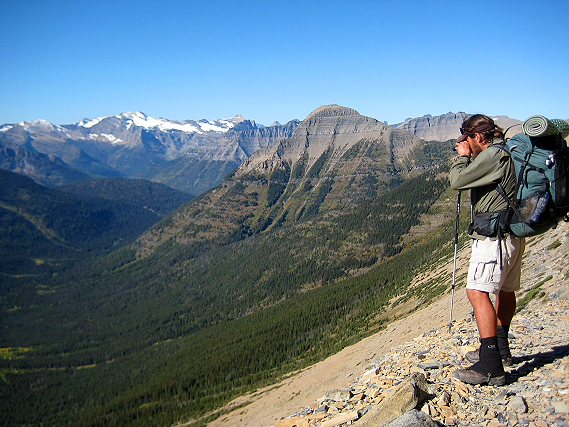
While all the amazing wildlife I was seeing
wasn’t going unappreciated, I still was aching to see a grizzly. I was
doing everything I could to improve my odds even, I’m not proud to say, all the things a hiker in grizzly country is
not supposed to do, I was hiking early and late in the day, hiking as quiet as possible, and hiking alone. The photo above is me glassing the valley below for griz.
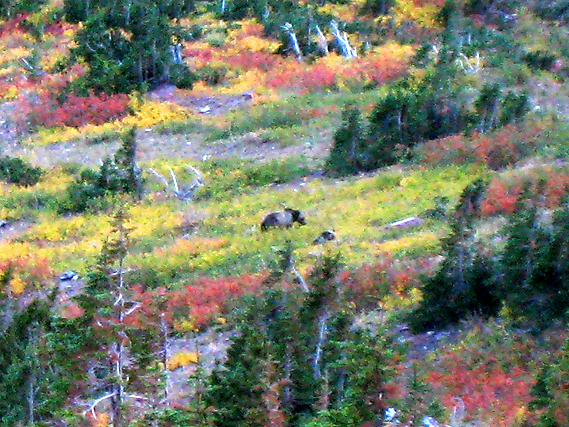
Finally! Late one evening, just a mere
few days before catching a train back to Missouri,
I got my grizzly. It was a perfect situation too; a sow and two cubs were lazily
grazing on huckleberries about 200 yards down a slope below me. The wind was
in my favor allowing me to watch them for nearly an hour before having to hike into the night to find my hiking partner and
camp.
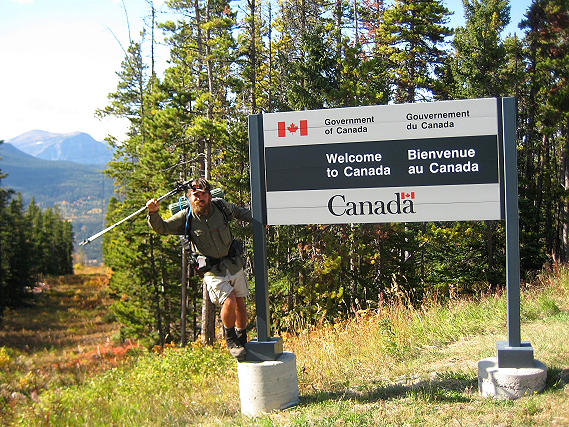
Three seasons and 3000 miles of hiking
through some of this nation’s most spectacular country took my hiking partner and I to the United States/Canada boarder
on October 3. The very next morning I was on a train home to Missouri
To say that I had a lot of help in undertaking
this trek would be a severe understatement. Rather than list all the people here
that helped me make this trip possible, I think I’m just going to say thanks, and you know who you are.
CDT Herp List:
Collared
Lizard Crotaphytus collaris
Boreal
Toad Bufo boreas boreas
Eastern
Side-blotched Lizard Uta stansburiana stejnegeri
Desert
Spiny Lizard Sceloporus magister
Chihuahuan
Spotted Whiptail Aspidoscelis exsanguis
Long-nosed
Leopard Lizard Gambelia wislizenii
Round-tailed
Horned Lizard Phrynosoma modestum
Western
Diamond-backed Rattlesnake Crotalus atrox
Arizona
Toad Bufo microscaphus
Crevice
Spiny Lizard Sceloporus poinsetti poinsetti
Hernandez’s
Short Horned Lizard Phrynosoma hernandesi
hernandesi
Common
Lesser Earless Lizard Holbrookia maculate;
Southern
Prairie Lizard Sceloporus undulates consobrinus
Checkered
Whiptail Cnemidophorus tesselatus
Desert Striped Whipsnake Masticophis taeniatus taeniatus
Sonoran
Gophersnake Pituophis catenifer affinis
Arid
Land Ribbonsnake Thamnophis proximus diabolicus
(DOR)
Arizona
Alligator Lizard Elgaria kingii nobilis
Arizona
Tiger Salamander Ambystoma tigrinum nebulosum
Wandering
Gartersnake Thamnophis elegans vagrans
Boreal
Chorus Frog Pseudacris maculate
Columbia Spotted Frog Rana luteiventris
Blotched Tiger Salamander Ambystoma tigrinum melanostictum
Northern Prairie Lizard
Sceloporus undulates elongatus
Sagebrush Lizard Sceloporus graciosus
|

